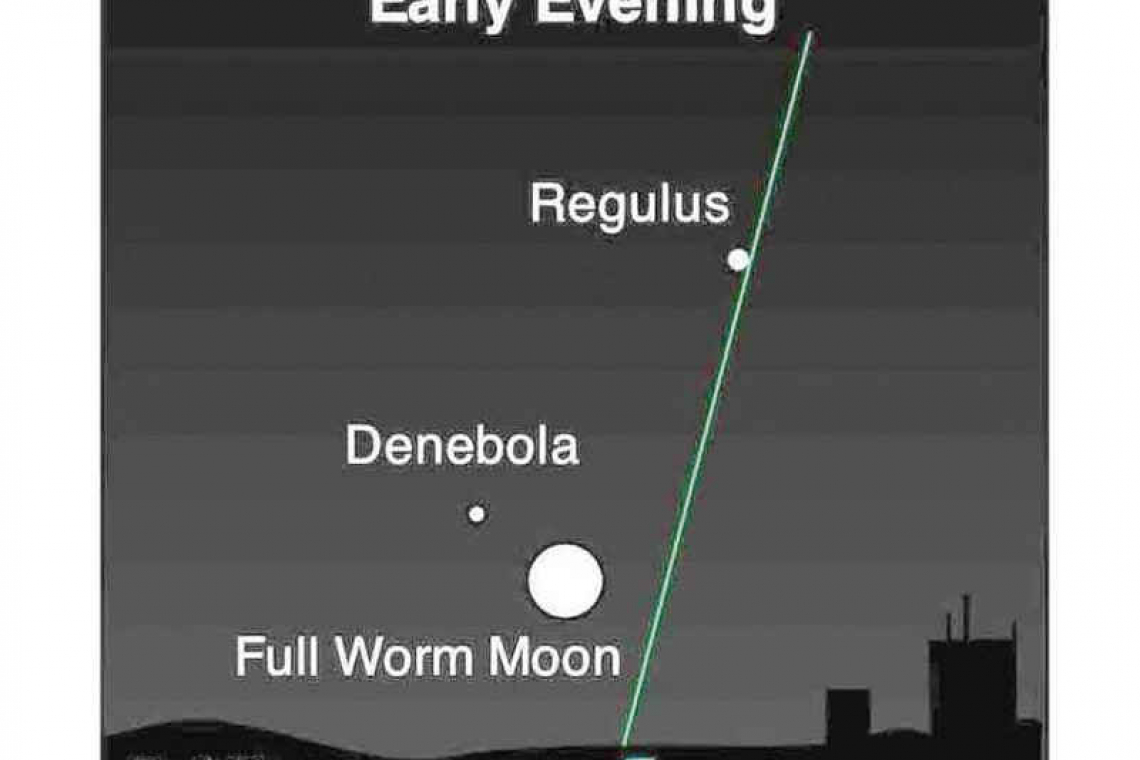~ St. Maarten’s Backyard Astronomy for March 18 - 20 ~
Sun rises at 6:17am
Sun sets at 6:22pm
Lunar phase: full moon
Moon set: 7:15am
Moon rise: 7:51pm
This weekend, we enjoy the Full Worm Moon! Hopefully, it will look nicer than it sounds, but…okay, worms are worth celebrating, right? All God’s creatures, great and small, as they say... This full moon will sit snugly between two well-known constellations, just behind the hind quarters of Leo the Lion and among the flaxen strands of Virgo the Virgin’s hair.
This full moon is also important because it is the closest full moon to this year’s spring equinox. Of course, it’s the spring equinox for us in the Northern Hemisphere, but the autumn equinox for those in the Southern Hemisphere. And so, this is the Harvest Moon if you live “down under”, a time to linger under moonlit nights as daylight hours shorten. Meanwhile, we in the Northern Hemisphere will be watching daylight hours expand with each subsequent day.
The equinoxes are the “points of equality” when daylight and dark hours are balanced on the globe. What a marvel is our solar system to offer us glimpses of such grand geometry, and how fortunate are we to stand on the shoulders of such geniuses as Kepler and Copernicus, early scientists who observed and wondered, and finally began to understand what they were seeing.
When you view this full moon rising, notice the timing. All full moons rise with the setting of the sun – that is why they are full! Astronomers call this positioning opposition, as the sun and the full moon are on opposite sides of the sky and maintain that opposition for the duration of the full moon phase. Early risers will have the blessing of watching the full moon set in the west while the sun begins to rise in the eastern predawn sky.
Look also to the height of the moon’s arc across our sky. For us in the Northern Hemisphere, the arc of this full moon will be a bit lower than the paths of the full moons of December, January, and February.
The pre-dawn sky is also a chance to view a few planets. Look ahead of the sunrise for Venus, Mercury, Mars, and Saturn. Admittedly, Northern Hemisphere observers will have a tough time spotting Mercury at any time during this month of March. But the other three planets will grace the eastern sky before sunrise and should be easily recognized, as long as cloud cover is sparse. Someone really should get the pesky clouds to stay away, so we can see our stars, planets and the moon. I will work on that for next week!
Thank you for keeping up with the Night Sky articles, backyard astronomy designed for St. Maarten sky viewing. FYI: If you are out later on in the week, note that each star rises about four minutes earlier each day than written here, and the moon rises 50 minutes later. Night Sky is researched and compiled by Lisa Davis-Burnett. Earthsky.org is a key resource for information and images. Questions or comments? Email This email address is being protected from spambots. You need JavaScript enabled to view it..







